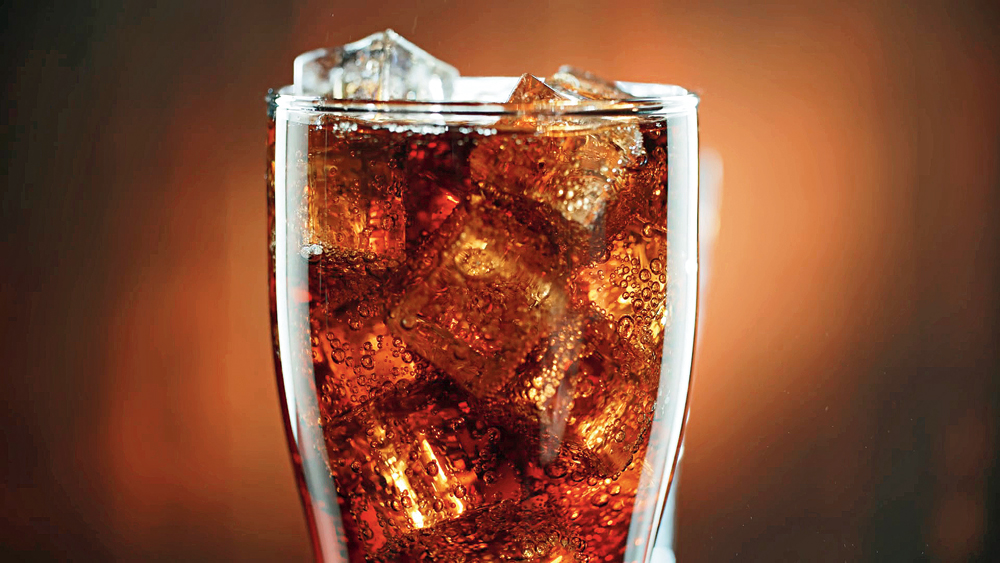Fizz is flat
Once considered as the top thirst quencher, the refresher in chief as it were, the cola, even the ones with added “twists” and flavour, is slowly losing favour in the overall soft beverage market and the big soda is becoming smaller as we move on the beverage timeline. While some colas with the zing apparently still have the “thing” and some taste the thunder without wonder, most among the cola connoisseurs have moved on to healthier beverages such as fresh juices, tea and even water. It is, therefore, a distinguishable trend over the decade that people of all ages are no longer getting dizzy over the fizzy and ordering flat drinks instead. The increasing focus on health and wellness, availability of many more beverages in the canned and bottled form and the convenience, as well as affordability, are some of the reasons of the phenomenon, I reckon.
That’s the spirit
In the alcoholic beverage segment, too, there has been a series of remarkable trends. Premiumisation has been the predominant jargon in the alcoholic beverage industry where people are reducing their consumption of the “daily” alcohol, drinking fewer numbers of times but drinking more premium alcohol. The sales and consumption of high-end beers, wines and spirits are on the upswing as people reconcile to the good and the bad effects of posh consumption.
With more and more people travelling and experiencing the different varieties of alcoholic beverages, easy global availability and the acceptability of social drinking on the rise, the boozers of yesteryears are the connoisseurs of today. Another trend, in line with the overall food trend, is the emergence of “healthier” alcoholic drinks that are low-cal, low-carb, gluten-free and low-sugar. The hitherto exclusivity of “experimental drinks” and “craft cocktails” are more commonplace now than ever before with sommeliers and mixologists creating more premium cocktails, often borrowing culinary principles in the preparation of tastier and healthier drinks.
Eggs... with everything
One of the strong culinary trends of the last decade has been the resurgence of the humble egg. Thoroughly and unkindly vilified for long, especially the egg yolk, the versatile culinary gem finally seems to have gotten its due. Come to think of it, which other culinary ingredient shines as a cold appetiser, a hot main course and an essential ingredient of most desserts?! Add the spicy, spiky eggnog or the whisky sour and you know I’m not egging you on to something I don’t mean. Maybe it’s the fact that everyone and their grand-uncle wants to cling on to food items with high protein, of which egg has plenty of, or the catching up trend of “brinner” (meaning breakfast for dinner) among the millennial, egg is catching on as the definitive go-to food for the young and the old alike. So whether it’s the Israeli Shakshuka or the Georgian Khachapuri, the Mexican Chilaquiles or the Indian Akuri, eggs are breaking right out. If you really need something to egg on to, search “cured egg yolks” and see if it “shell” shocks you.
Small is big: Even smaller is even bigger
Remember when a plate of food meant you and your date could share it while packing some for Tommy back home? Chances are, that might just be a faint memory but if not, know this: more and more people are opting for smaller portions of foods and everything fancy comes with a mini version, often the mini-me is more in demand than the me. So whether it is a mini bagel, a mini doughnut, a mini slider or a mini cupcake, there is a big demand for the small. The concepts of small plates, grazing platters and one-pot meals seem to be the consistent trend over the past decade, even Indian dishes have gone the compact way and mini naans, mini idlis and mini kebabs have made their way through the gigantic family naan, the full Tandoori Raan and other colossal culinary creations, the time of which is clearly over.
As well as that, there is an increasing trend of minimalism where chefs are creating high-flavour foods with fewer ingredients and practicing willful restraint right from the ingredient selection, to cooking techniques and garnishing. So there, in the next decade, prepare to eat small to eat big.
Digital satiation
I am sure I have saved for the last, the most noticeable, strongest trend that has completely changed the way we interact with our food, well, most of us anyway, is the digital intervention in the way we treat our food before, during and sometimes even after eating it. The emergence of digital media has resulted in a definitive visual hunger that in turn has given the term “eating with the eyes” a whole new meaning.
As we talk of trends in food and beverage, it is worth noting that almost all big trends in the space has been mostly a social media creation and indeed a carrier of the trend more than anything else. Over 208 million Instagram posts have been hashtagged “food” since the beginning of this decade and it’s easy to see how the social media of today brings people and food together. Along with this, it is for everyone to see how the online food delivery platforms have fundamentally changed the way we make our food choices and interact with food on a wider level, almost all of it happening in the last decade itself.
This way or that, technological integration is perhaps the most noticeable food trend of the last decade and although not directly related with food preparation in the true sense, has been the single most influential trendsetter in the entire space. Although this particular trend is seeing its share of criticism with many restaurants across the world trying their best to wean the diners away from their gadgets and enjoy what’s in front of them the old-fashioned way, you know, by actually just eating it, it remains a true phenomenon, more so over the last various years that social media platforms have been able to create an almost impenetrable ecosystem of influencing the food choices and has made food and drinks, even the experience, much more multilayered and complex, something that can be loved or hated, but not ignored.
Vikas Kumar is the executive chef of Flurys. You can reach him at vkumar@flurys.com










